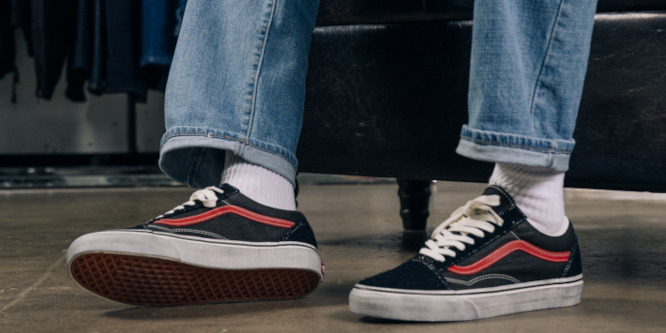
Source: Facebook | Foot Locker
Why Are Sneaker Sales Skidding at Foot Locker?
Foot Locker’s shares on Friday lost 27 percent of their value after the chain slashed its guidance as sneaker buying turned more discretionary than expected.
The retailer’s updated 2023 guidance calls for:
- Same-store sales to be down between 7.5 percent to nine percent, versus down 3.5 percent to 5.5 percent previously;
- Adjusted earnings per share (EPS) to range between $2.00 to $2.25 versus $3.35 and $3.65.
On its first-quarter analyst call, Mary Dillon, CEO, said that Foot Locker saw a consumer retrench following better-than-expected holiday sales and inflation pressuring discretionary spending. She said spending was also shifting more towards services “as consumers are forced to be more choiceful on how to spend their money.”
A third factor impacting sales in the near term has been a 10 percent decline in average tax refunds that “has an outsized impact on Foot Locker’s business given that it over-indexes to a lower-income consumer,” Ms. Dillon said.
April was expected to see a pickup as the refund drag lessened and a more favorable sneaker launch calendar arrived, but trends didn’t improve as much as expected and weakness has continued into May.
“As a result, we increased our promotional activity late in the first quarter and more so in the second quarter and we expect that level of promotional activity to continue through the balance of the year,” Ms. Dillon said.
She noted that 2023 has already been considered a “reset year” as the chain repairs its relationship with Nike and repositions its Champs banner toward the “active athlete” consumer.
Encouragingly, Nike’s sales are expected to start growing again towards the end of the year; strength is being seen by New Balance, Adidas, On and other non-Nike brands; and customers are “showing up at key moments, key launches, key holidays,” including sell-outs seen the prior weekend for a Jordan Retro 4 Thunder launch.
Inflation is expected to weigh on Foot Locker’s middle- and lower-income customers. “Whether it’s gas, food, or rents that are elevated in terms of cost, that puts pressure on their ability to spend discretionary dollars, which affects our category,” Ms. Dillon said.
Discussion Questions
DISCUSSION QUESTIONS: Do you attribute the slowdown at Foot Locker more to external factors such as inflation or unique challenges facing the retailer and the sneaker category? Is increased promotional activity the correct response to current conditions?
